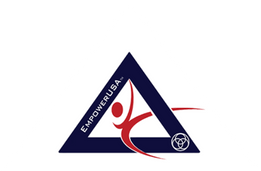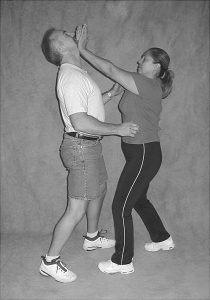Introduction
The terms ‘personal safety’ and self-defense’ are commonly used interchangeably. But I want you to
understand the difference between the two terms, from my perspective, as you read through the rest of the
articles. That is why the first article of this series provided definitions for ‘personal safety’ and ‘self-
defense’. With those definitions in mind, read on and learn “Why” personal safety and self-defense
training should be a part of a comprehensive Wellness program.
“WHY?”
Proactive, forward-thinking companies do what is necessary to ensure that employees are mentally,
emotionally, and physically healthy. These companies understand that by providing employees with
benefits like wellness programs, insurance, training/education, and more, they are investing in their
future.
When the term “wellness program” is used, most people think of fitness training, stress relief, smoking
cessation, etc. Very few people relate personal safety/self defense training with “wellness” training.
However, personal safety/self-defense training DOES fall within the scope of wellness.
Psychologist Abraham Maslow developed (1943) the Hierarchy of Human Needs pyramid
(http://en.wikipedia.org/wiki/Maslow%27s_hierarchy_of_needs#Safety_needs – reference). Maslow’s
hierarchy of needs is depicted as a pyramid consisting of five levels:
• The lowest, but most important level of the pyramid, is associated with human physiological needs
(air, water, and food),
• The highest level (the peak) of the pyramid is associated with self-actualization needs, particularly
those related to identity and purpose.
• The higher needs of the hierarchy pyramid can only be achieved when the lower level, foundational
needs are met.
• Once an individual has moved upwards to the next pyramid level, needs in the lower level are no
longer prioritized. However, if a lower set of needs is suddenly not being met, the individual must
temporarily re-focus attention on those unfulfilled needs. If a person does not feel safe, he or she
cannot move up to or focus on the higher levels of wellness.
 Maslow’s pyramid shows that the most basic and fundamental needs for human beings are physiological
Maslow’s pyramid shows that the most basic and fundamental needs for human beings are physiological
– food, water, air. These “needs” form the base of the pyramid – they are the highest priority. The next
higher level on the pyramid, ranking second in importance behind physiological needs, is “Safety”!
Safety is divided into different types: safety of the body, employment, resources, morality, the family,
health, and property. According to Maslow, we need to feel safe in each of these areas to enjoy a healthy,
fulfilling life. This makes sense. Feeling insecure or unsafe causes negative stress levels to increase. The
physiological and psychological effects of negative stress have consequences for health and well-being.
This is a great reason to proactively enhance personal safety!
Be Reactive or Proactive?
We are a reactive society – we tend to wait until something bad happens before attempting to change or
improve a situation. But once something bad happens, it may be too late. The damage or negative impact
(short-term and/or long-term) is done. Proactively (before something bad happens) participating in a
quality personal safety/self-defense training program can provide huge personal and professional benefits.
Some companies recognize the numerous potential benefits of providing personal safety/self-defense
training for employees, proactively – prior to a harmful incident. Training can range from brief
lectures/seminars on enhancing awareness with no physical skills training to a comprehensive program
that includes awareness training combined with specific and necessary physical self-defense skills.
Companies should recognize both the short-term and long-term value in providing important potential
life-saving skills for employees.
Other than the primary benefit of teaching employees how to avoid, deal with and/or physically defend
themselves against a physical attack – there are very significant reasons why a company might want to
offer such a program. The following are some great reasons to include personal safety training!
Personal Safety/Self Defense training can prevent workplace violence before it even happens.
Workplace violence is growing at an alarming rate. Providing personal safety/self-defense training for
employees may create an internal deterrent against a violent attack.
Imagine the costs a company could incur after dealing with the aftermath of an act of violence in the
workplace. A small investment of time and money in quality personal safety/self-defense training today
can prevent catastrophic losses in the future – losses that can literally cripple a company.
Employees who can protect themselves are more confident, which directly impacts their performance
and leadership potential. Untrained individuals tend to avoid new situations and people. Self-defense
training helps to build confidence, increase self-esteem, and a greater sense of leadership presence.
Confident people tend to be more able to overcome obstacles and get the job done.
People who feel safe are less prone to the debilitating effects of stress, which is the number one factor
in many illnesses and a leading cause of on-the-job accidents. The increased confidence, coupled with an
increased sense of calm, can mean long-term health care cost savings for an employer. Less stress means
less stress-related illnesses, less lost time due to illness, fewer accidents, and higher productivity. Without
the burden of stress-related paralysis, employees are more energetic, quick-thinking, and relaxed – making
them more productive team members.
Personal Safety/Self-defense training improves employee discipline, morale, and teamwork.
Feelings of weakness, social anxiety, and concern for one’s safety, by any one individual, can cause stress
for an entire employee group. Many employees live in fear of making the wrong decisions, some care
little for their job – expecting to be paid for time rather than productivity – and others suffer from poor
interpersonal skills. The difference between a company with a workforce made up of positive, powerful,
and productive people and one that is not, is obvious.
Emotional and psychological barriers to personal achievement can prevent a team from functioning
productively. A properly structured program allows team members to come together in a supportive
environment to learn important skills. With the help of co-workers, individuals with weaker skill sets
learn to overcome obstacles and fears that may be holding them back, and safely become leaders.
Personal Safety/Self-defense training improves creative problem-solving skills. Personal Safety/Self-
defense training can help employees learn to creatively overcome obstacles to success. This type of
training can develop and/or improve problem-solving abilities, creativity, and “outside the box” thinking.
Employees learn to think “strategically”, providing their company with the ability to identify symptoms
and root causes of problems and determine both corrective and preventive actions, leading to less wasted
time, money, and other resources in having to repeatedly “replace band-aids.”
Employees may experience a greater sense of happiness and peace of mind. Happier employees
provide many benefits for their employers. Individuals who have a confident, positive outlook on life are
less likely to be threatened by change, become defensive with others, or lash out at others verbally,
physically, or emotionally when things don’t go smoothly. Personal Safety/Self-defense training is known
to be a source of personal empowerment and confidence, providing people with the ability to be in control
of him or herself. It is this type of person that tends to attract and affect others in a positive way, making
that person a valuable company asset.
Summary of Personal Safety/Self Defense Training Benefits
Besides the obvious enhancement of personal safety, this type of training, if properly structured and
implemented, offers many benefits that can elevate the quality of life on both a personal and professional
level. Here is a partial list of those benefits:
• Learn to positively deal with conflict through physical and emotional interaction during training.
• Develops a greater sense of physical balance and fine motor skills.
• Increased self-confidence and self-control.
• Creates a new level of respect for others.
• Teaches goalsetting and improves organizational & leadership skills.
• Provides an energy outlet (stress relief) which promotes a non-aggressive attitude.
• Develops assertiveness while reducing aggressiveness.
• Increase awareness of the benefits of a healthy and fit lifestyle
• Promotes a higher level of mental, emotional, environmental, and physical awareness.
• Enhances patience.
• Provides a “teamwork” experience.
• Learn to recognize, handle, and manage fear in all aspects of life.
• Develop the most powerful weapon available – intelligence!
• Teaches quick decision-making.
• Overcome complacency and bad habits that can make you a prime target for victimization.
• Learn to apply prevention and avoidance strategies that are consistent with your individual lifestyle.
• Learn to “check” your ego and let go of your pride.
• Learn training methods that will enable you to maintain personal safety, health, and fitness.
• Teach you to evaluate a self-defense training resource for practicality and realistic effectiveness.
• Learn to have grace under pressure.
• Develop a greater ability to concentrate.
• Become a role model.
• Make new friends and have fun!
Now that we have answered the question, “why personal safety or self-defense training?”, the
next important area to discuss is “what to look for in a self-defense training program” – the
subject of the next article.
“ONE BODY, ONE LIFE, ONE CHOICE – BE SAFE & STRONG!”




